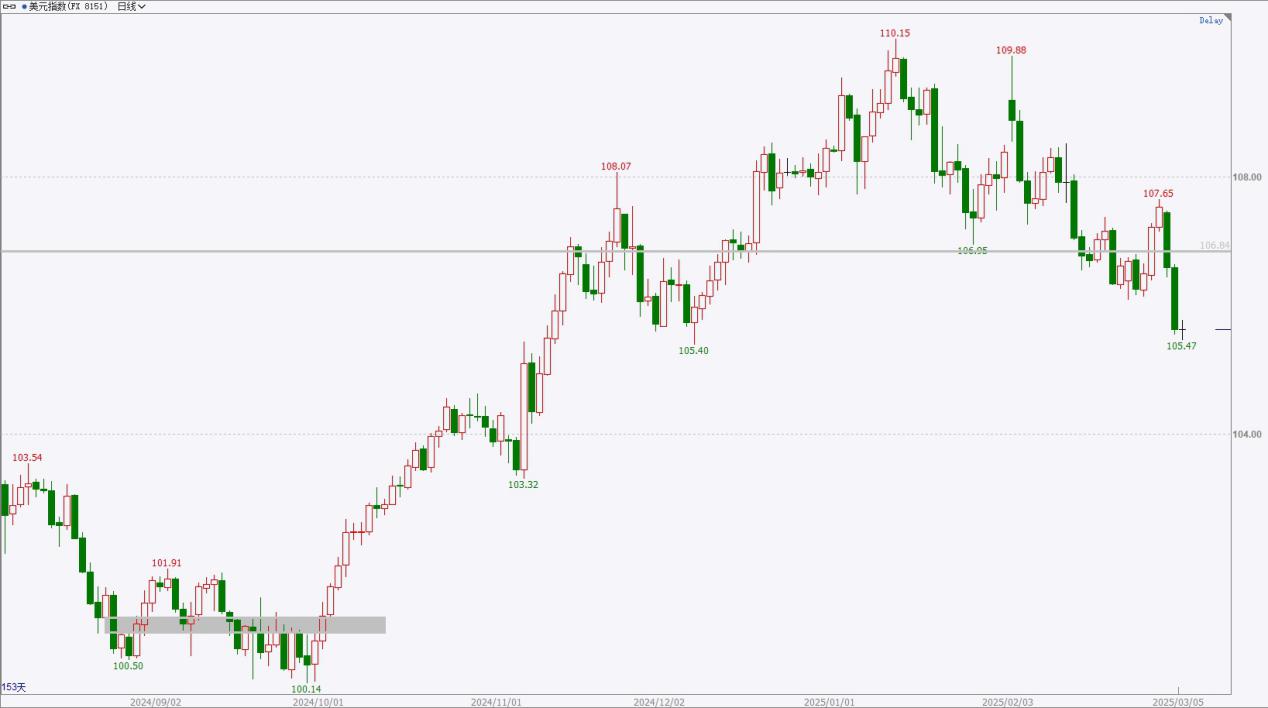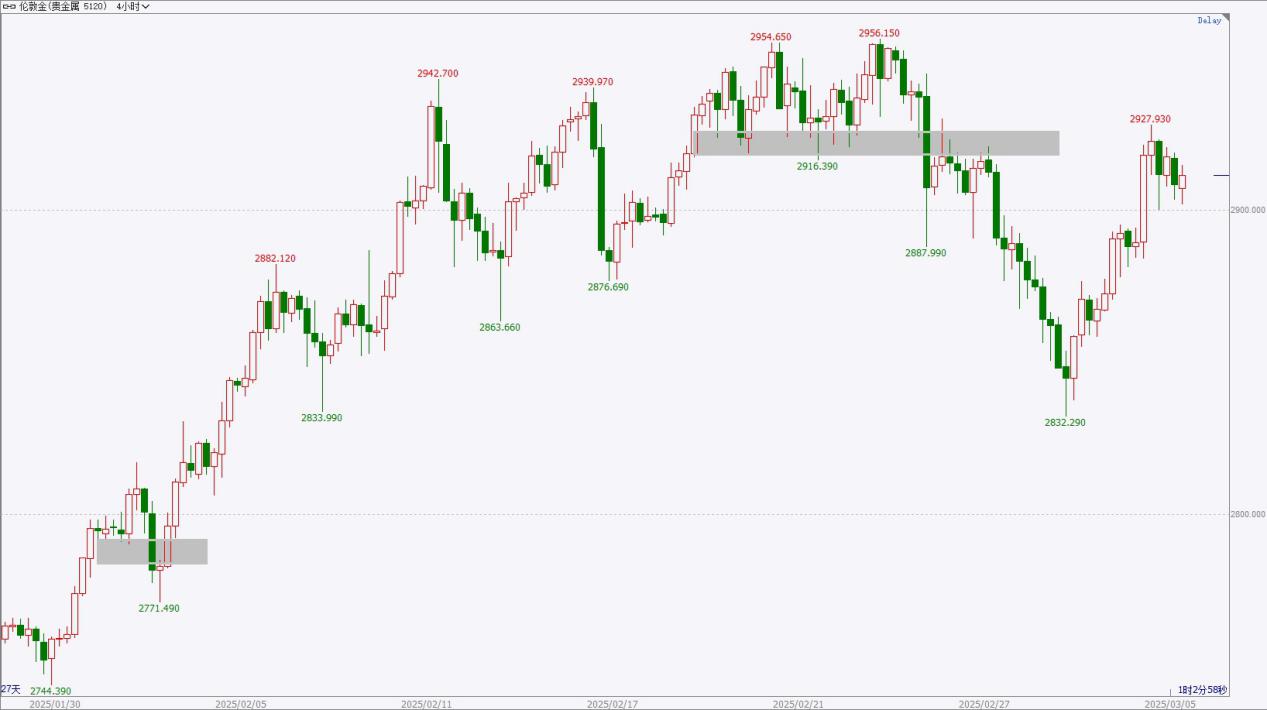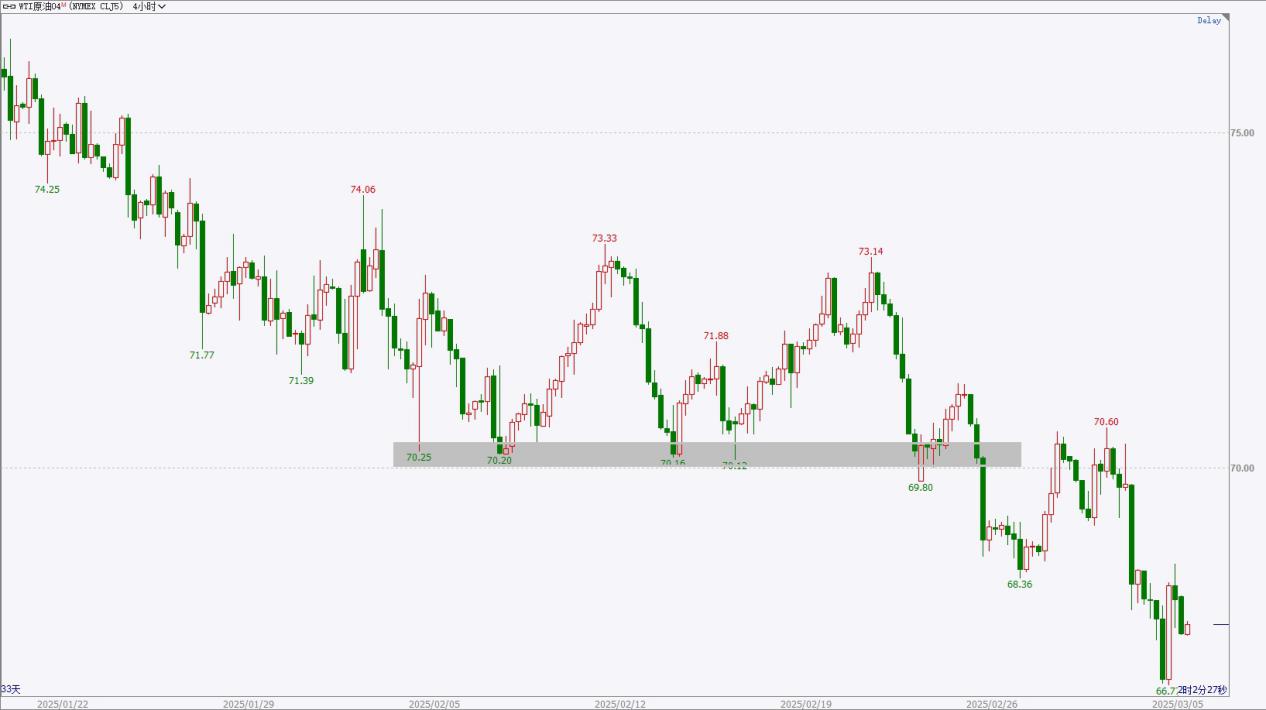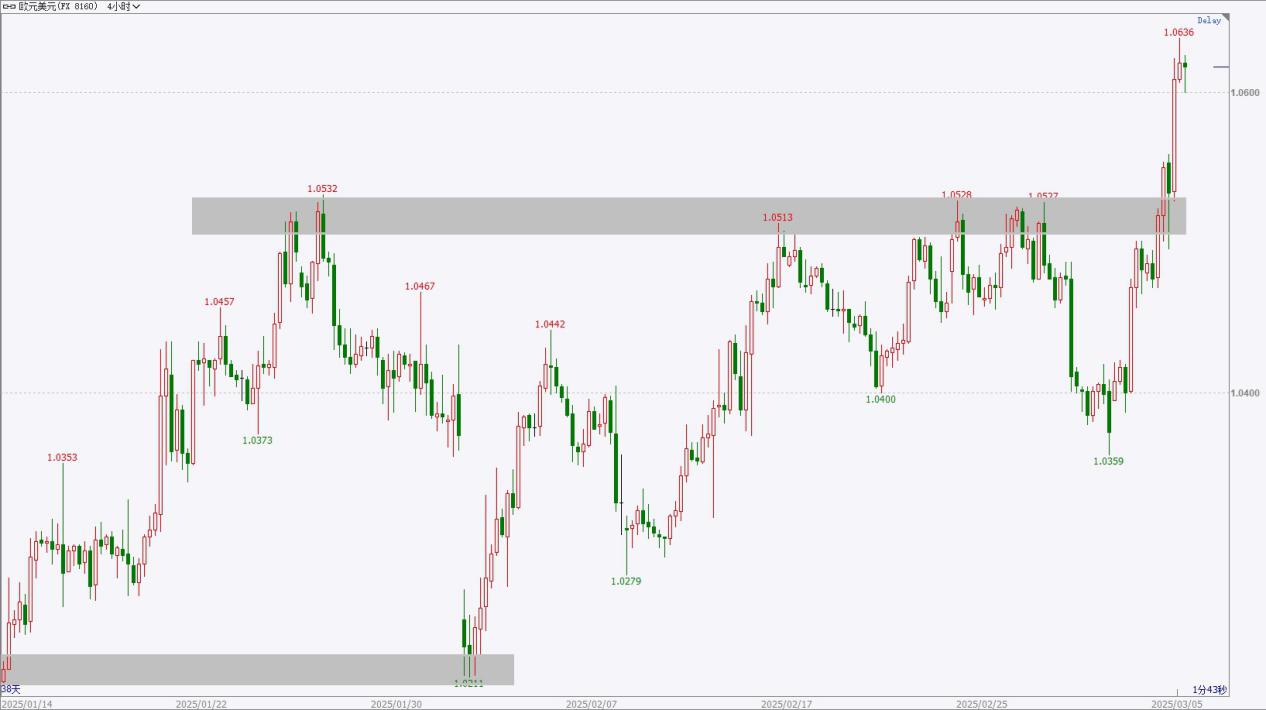|
Time
|
Data and Events
|
Importance
|
|
To be determined
|
Saudi Aramco announces the official crude oil price around the 5th of each month.
|
★★★
|
|
05:30
|
API crude oil inventory for the week ending February 28 in the United States
|
★★★
|
|
08:30
|
Annual GDP for Australia in the fourth quarter
|
★★★
|
|
15:30
|
Switzerland’s CPI monthly rate for February
|
★★★
|
|
15:45
|
France’s industrial production monthly rate for January
|
★★★
|
|
16:50
|
France’s services PMI final value for February
|
★★★
|
|
17:00
|
Eurozone services PMI final value for February
|
★★★
|
|
17:30
|
UK services PMI final value for February
|
★★★
|
|
18:00
|
Eurozone PPI monthly rate for January
|
★★★
|
|
21:15
|
ADP employment change for the US in February
|
★★★★
|
|
22:30
|
Bank of England Governor Bailey and other central bank officials respond to questions from MPs regarding the central bank’s decision to cut interest rates in February.
|
★★★
|
|
23:00
|
US ISM non-manufacturing PMI for February
|
★★★
|
|
US factory orders monthly rate for January
|
★★★
|
|
23:30
|
EIA crude oil inventory for the week ending February 28 in the United States
|
★★★★
|
|
EIA crude oil inventory in Cushing, Oklahoma, for the week ending February 28 in the United States
|
★★★
|
|
EIA strategic petroleum reserve inventory for the week ending February 28 in the United States
|
★★★
|
|
Variety
|
Perspective
|
Support range
|
Pressure range
|
|
US dollar index
|
Weak fluctuation
|
103.5-104
|
107-107.5
|
|
Gold
|
Short-term rebound
|
2830-2850
|
2920-2930
|
|
Crude oil
|
Weak fluctuation
|
66-67
|
72-73
|
|
Euro
|
Strong fluctuation
|
1.0450-1.0500
|
1.0850-1.0900
|
*Pre-market perspective, time-sensitive and limited, belongs to prediction, for reference and learning only, not constituting investment advice, operational risks borne by oneself. Investing involves risks; trading requires caution.
Fundamental analysis:
At the end of January, the Federal Reserve meeting maintained interest rates unchanged, the labor market remained strong, economic activities expanded steadily, and inflation levels still appeared slightly high. Expectations for monetary policy easing have cooled, and attention will be paid to new government policies. In January, non-farm data showed an increase in employment numbers to 143,000, lower than expected, while the unemployment rate slightly dropped to 4.0%, demonstrating a robust labor market. The unadjusted CPI annual rate for January recorded 3.0%, slightly above the previous value and expectations. The core PCE price index annual rate for January slightly declined, in line with expectations. Attention will be on Friday’s non-farm data.
Technical analysis:

The US dollar index continued to decline yesterday, showing weak performance in the short term, with selling pressure above and signs of breaking the support area. The short-term may continue the weak trend, with attention to rebound high opportunities. Overall, the daily line shows signs of weakening after high-level fluctuations, and the short-term may continue the weak pullback. The small-level pressure area above is near 107-107.5, while the support area below is around 103.5-104.
Viewpoint: Weak fluctuation, with signs of breaking the support area; attention to rebound high opportunities.
*Pre-market perspective, time-sensitive and limited, belongs to prediction, for reference and learning only, not constituting investment advice, operational risks borne by oneself. Investing involves risks; trading requires caution.
Fundamental analysis:
Geopolitical conflicts in the Middle East continue to worsen, and the situation in Eastern Europe remains unstable with uncertainties. The European Central Bank’s interest rate decision at the end of January saw a consecutive fourth cut of 25 basis points; inflation is largely in line with expectations, but economic performance remains weak and under pressure. At the end of January, the Federal Reserve decided to keep interest rates unchanged, with economic activity performing well and inflation levels still relatively high, mitigating expectations for rate cuts. The U.S. non-farm payroll data for January showed average performance, with new jobs decreasing below expectations, while the unemployment rate slightly improved, being slightly better than expected; the January CPI year-on-year rate warmed slightly, exceeding expectations.
Technical analysis:

Gold prices continue to rebound, showing a short-term oscillation upward, currently approaching a resistance area. If there are long positions, it is advisable to take profits on rallies; if the structure is clearly broken upwards, the market will strengthen; otherwise, it may exhibit a sideways trend. From a larger timeframe perspective, the upward structure remains intact, with daily oscillating upward and prices repeatedly reaching new highs. The upper resistance level may be around 2920-2930, while the lower small support level may be around 2830-2850.
Viewpoint: Short-term rebound, approaching the resistance structure, pay attention to whether it can break upwards.
*Pre-market perspective, time-sensitive and limited, belongs to prediction, for reference and learning only, not constituting investment advice, operational risks borne by oneself. Investing involves risks; trading requires caution.
Fundamental analysis:
The February EIA monthly report maintains the global oil demand growth forecast for this and next year, with a slight adjustment to 2025 oil prices; the OPEC monthly report maintains the global oil demand growth expectations for this and next year; the IEA monthly report slightly raises the global oil demand growth expectation for 2025. At the beginning of February, the OPEC+ meeting adhered to the previous oil production agreement, with the committee agreeing to gradually increase oil production starting from April 1, in line with previous plans. EIA crude oil inventories decreased, below expectations, which may affect the supply-demand structure. Pay attention to EIA crude oil inventory reports on Wednesday.
Technical analysis:

U.S. crude oil experienced a rebound in the night session, with prices rising slightly but facing resistance, with selling pressure on the upper side. The short-term outlook remains weak; currently, prices are at a relatively low level, recommending to reduce short positions and take profits on dips while mainly focusing on short-selling strategies. Overall, crude oil prices oscillate in a moderately strong manner, showing signs of stabilization on a larger scale while entering a short-term pullback. The upper resistance area is near 72-73, while the lower support area is near 66-67.
Viewpoint: Oscillating mildly weak; reduce short positions to take profits on dips if applicable.
*Pre-market perspective, time-sensitive and limited, belongs to prediction, for reference and learning only, not constituting investment advice, operational risks borne by oneself. Investing involves risks; trading requires caution.
Fundamental analysis:
The European Central Bank’s interest rate decision at the end of January saw a consecutive fourth cut of 25 basis points, with inflation generally meeting expectations, and the aim is to return to the medium-term target this year. The economy still faces challenges and may continue to show weakness in the short term, while income and policy effects support a rebound in demand. The Federal Reserve’s interest rate decision at the end of January maintained rates unchanged, with overall economic performance strong, alleviating expectations for easing. The U.S. non-farm payroll data for January showed average performance, with new job numbers decreasing, while the unemployment rate fell slightly; the U.S. January CPI year-on-year rate warmed slightly. The manufacturing PMI in the Eurozone changed little. Pay attention to the European Central Bank meeting on Thursday.
Technical analysis:

The euro price surged significantly yesterday, with the daily line closing with a large bullish candle, clearly breaking the resistance area, indicating signs of strengthening in the market. Pay attention to the support area below and look for opportunities to buy on dips. Overall, prices are at a relatively low level, with the daily oscillating structure potentially signaling stabilization on a larger scale. The upper resistance area is between 1.0850-1.0900, while the lower support area is between 1.0450-1.0500.
Viewpoint: Oscillating mildly strong; the price has broken through the resistance area, focusing on buying on dips.
*Pre-market perspective, time-sensitive and limited, belongs to prediction, for reference and learning only, not constituting investment advice, operational risks borne by oneself. Investing involves risks; trading requires caution.


Daily Reviews
Our award-winning team of analysts provides keen and insightful technical and fundamental analysis to understand daily market news and investment trading opportunities
HTFX Daily Forex Commentary 0305
Time
Data and Events
Importance
To be determined
Saudi Aramco announces the official crude oil price around the 5th of each month.
★★★
05:30
API crude oil inventory for the week ending February 28 in the United States
★★★
08:30
Annual GDP for Australia in the fourth quarter
★★★
15:30
Switzerland’s CPI monthly rate for February
★★★
15:45
France’s industrial production monthly rate for January
★★★
16:50
France’s services PMI final value for February
★★★
17:00
Eurozone services PMI final value for February
★★★
17:30
UK services PMI final value for February
★★★
18:00
Eurozone PPI monthly rate for January
★★★
21:15
ADP employment change for the US in February
★★★★
22:30
Bank of England Governor Bailey and other central bank officials respond to questions from MPs regarding the central bank’s decision to cut interest rates in February.
★★★
23:00
US ISM non-manufacturing PMI for February
★★★
US factory orders monthly rate for January
★★★
23:30
EIA crude oil inventory for the week ending February 28 in the United States
★★★★
EIA crude oil inventory in Cushing, Oklahoma, for the week ending February 28 in the United States
★★★
EIA strategic petroleum reserve inventory for the week ending February 28 in the United States
★★★
Variety
Perspective
Support range
Pressure range
US dollar index
Weak fluctuation
103.5-104
107-107.5
Gold
Short-term rebound
2830-2850
2920-2930
Crude oil
Weak fluctuation
66-67
72-73
Euro
Strong fluctuation
1.0450-1.0500
1.0850-1.0900
*Pre-market perspective, time-sensitive and limited, belongs to prediction, for reference and learning only, not constituting investment advice, operational risks borne by oneself. Investing involves risks; trading requires caution.
Fundamental analysis:
At the end of January, the Federal Reserve meeting maintained interest rates unchanged, the labor market remained strong, economic activities expanded steadily, and inflation levels still appeared slightly high. Expectations for monetary policy easing have cooled, and attention will be paid to new government policies. In January, non-farm data showed an increase in employment numbers to 143,000, lower than expected, while the unemployment rate slightly dropped to 4.0%, demonstrating a robust labor market. The unadjusted CPI annual rate for January recorded 3.0%, slightly above the previous value and expectations. The core PCE price index annual rate for January slightly declined, in line with expectations. Attention will be on Friday’s non-farm data.
Technical analysis:
The US dollar index continued to decline yesterday, showing weak performance in the short term, with selling pressure above and signs of breaking the support area. The short-term may continue the weak trend, with attention to rebound high opportunities. Overall, the daily line shows signs of weakening after high-level fluctuations, and the short-term may continue the weak pullback. The small-level pressure area above is near 107-107.5, while the support area below is around 103.5-104.
Viewpoint: Weak fluctuation, with signs of breaking the support area; attention to rebound high opportunities.
*Pre-market perspective, time-sensitive and limited, belongs to prediction, for reference and learning only, not constituting investment advice, operational risks borne by oneself. Investing involves risks; trading requires caution.
Fundamental analysis:
Geopolitical conflicts in the Middle East continue to worsen, and the situation in Eastern Europe remains unstable with uncertainties. The European Central Bank’s interest rate decision at the end of January saw a consecutive fourth cut of 25 basis points; inflation is largely in line with expectations, but economic performance remains weak and under pressure. At the end of January, the Federal Reserve decided to keep interest rates unchanged, with economic activity performing well and inflation levels still relatively high, mitigating expectations for rate cuts. The U.S. non-farm payroll data for January showed average performance, with new jobs decreasing below expectations, while the unemployment rate slightly improved, being slightly better than expected; the January CPI year-on-year rate warmed slightly, exceeding expectations.
Technical analysis:
Gold prices continue to rebound, showing a short-term oscillation upward, currently approaching a resistance area. If there are long positions, it is advisable to take profits on rallies; if the structure is clearly broken upwards, the market will strengthen; otherwise, it may exhibit a sideways trend. From a larger timeframe perspective, the upward structure remains intact, with daily oscillating upward and prices repeatedly reaching new highs. The upper resistance level may be around 2920-2930, while the lower small support level may be around 2830-2850.
Viewpoint: Short-term rebound, approaching the resistance structure, pay attention to whether it can break upwards.
*Pre-market perspective, time-sensitive and limited, belongs to prediction, for reference and learning only, not constituting investment advice, operational risks borne by oneself. Investing involves risks; trading requires caution.
Fundamental analysis:
The February EIA monthly report maintains the global oil demand growth forecast for this and next year, with a slight adjustment to 2025 oil prices; the OPEC monthly report maintains the global oil demand growth expectations for this and next year; the IEA monthly report slightly raises the global oil demand growth expectation for 2025. At the beginning of February, the OPEC+ meeting adhered to the previous oil production agreement, with the committee agreeing to gradually increase oil production starting from April 1, in line with previous plans. EIA crude oil inventories decreased, below expectations, which may affect the supply-demand structure. Pay attention to EIA crude oil inventory reports on Wednesday.
Technical analysis:
U.S. crude oil experienced a rebound in the night session, with prices rising slightly but facing resistance, with selling pressure on the upper side. The short-term outlook remains weak; currently, prices are at a relatively low level, recommending to reduce short positions and take profits on dips while mainly focusing on short-selling strategies. Overall, crude oil prices oscillate in a moderately strong manner, showing signs of stabilization on a larger scale while entering a short-term pullback. The upper resistance area is near 72-73, while the lower support area is near 66-67.
Viewpoint: Oscillating mildly weak; reduce short positions to take profits on dips if applicable.
*Pre-market perspective, time-sensitive and limited, belongs to prediction, for reference and learning only, not constituting investment advice, operational risks borne by oneself. Investing involves risks; trading requires caution.
Fundamental analysis:
The European Central Bank’s interest rate decision at the end of January saw a consecutive fourth cut of 25 basis points, with inflation generally meeting expectations, and the aim is to return to the medium-term target this year. The economy still faces challenges and may continue to show weakness in the short term, while income and policy effects support a rebound in demand. The Federal Reserve’s interest rate decision at the end of January maintained rates unchanged, with overall economic performance strong, alleviating expectations for easing. The U.S. non-farm payroll data for January showed average performance, with new job numbers decreasing, while the unemployment rate fell slightly; the U.S. January CPI year-on-year rate warmed slightly. The manufacturing PMI in the Eurozone changed little. Pay attention to the European Central Bank meeting on Thursday.
Technical analysis:
The euro price surged significantly yesterday, with the daily line closing with a large bullish candle, clearly breaking the resistance area, indicating signs of strengthening in the market. Pay attention to the support area below and look for opportunities to buy on dips. Overall, prices are at a relatively low level, with the daily oscillating structure potentially signaling stabilization on a larger scale. The upper resistance area is between 1.0850-1.0900, while the lower support area is between 1.0450-1.0500.
Viewpoint: Oscillating mildly strong; the price has broken through the resistance area, focusing on buying on dips.
*Pre-market perspective, time-sensitive and limited, belongs to prediction, for reference and learning only, not constituting investment advice, operational risks borne by oneself. Investing involves risks; trading requires caution.
Latest Reviews
HTFX Daily Forex Commentary 0819
HTFX Daily Forex Commentary 0815
HTFX Daily Forex Commentary 0812
HTFX Daily Forex Commentary 0811
Choose a Trusted Broker for Trading
Over 300 employees worldwide, more than 1,000 products, top-tier liquidity